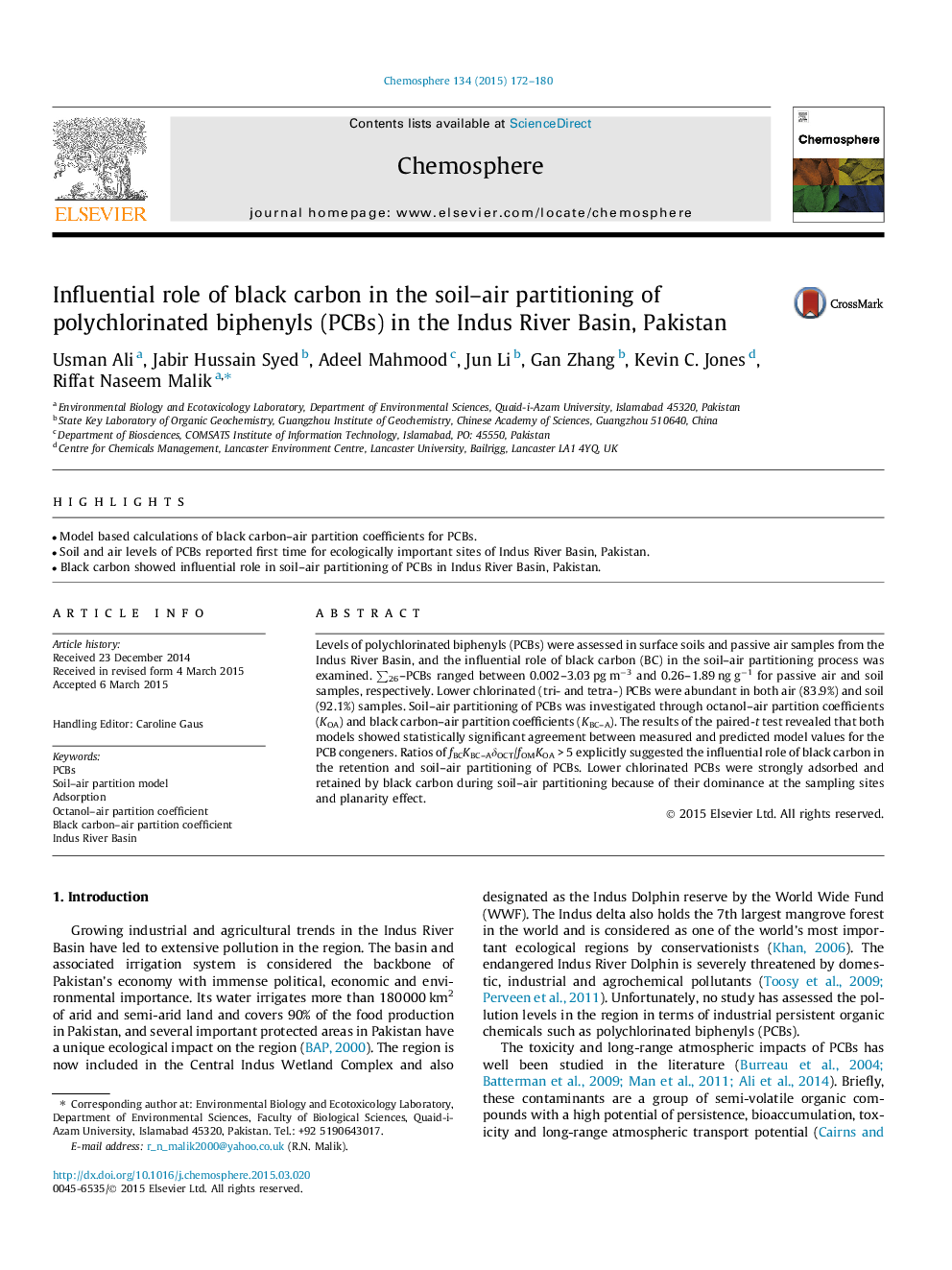| Article ID | Journal | Published Year | Pages | File Type |
|---|---|---|---|---|
| 6307644 | Chemosphere | 2015 | 9 Pages |
Abstract
Levels of polychlorinated biphenyls (PCBs) were assessed in surface soils and passive air samples from the Indus River Basin, and the influential role of black carbon (BC) in the soil-air partitioning process was examined. â26-PCBs ranged between 0.002-3.03 pg mâ3 and 0.26-1.89 ng gâ1 for passive air and soil samples, respectively. Lower chlorinated (tri- and tetra-) PCBs were abundant in both air (83.9%) and soil (92.1%) samples. Soil-air partitioning of PCBs was investigated through octanol-air partition coefficients (KOA) and black carbon-air partition coefficients (KBC-A). The results of the paired-t test revealed that both models showed statistically significant agreement between measured and predicted model values for the PCB congeners. Ratios of fBCKBC-AδOCT/fOMKOA > 5 explicitly suggested the influential role of black carbon in the retention and soil-air partitioning of PCBs. Lower chlorinated PCBs were strongly adsorbed and retained by black carbon during soil-air partitioning because of their dominance at the sampling sites and planarity effect.
Related Topics
Life Sciences
Environmental Science
Environmental Chemistry
Authors
Usman Ali, Jabir Hussain Syed, Adeel Mahmood, Jun Li, Gan Zhang, Kevin C. Jones, Riffat Naseem Malik,
